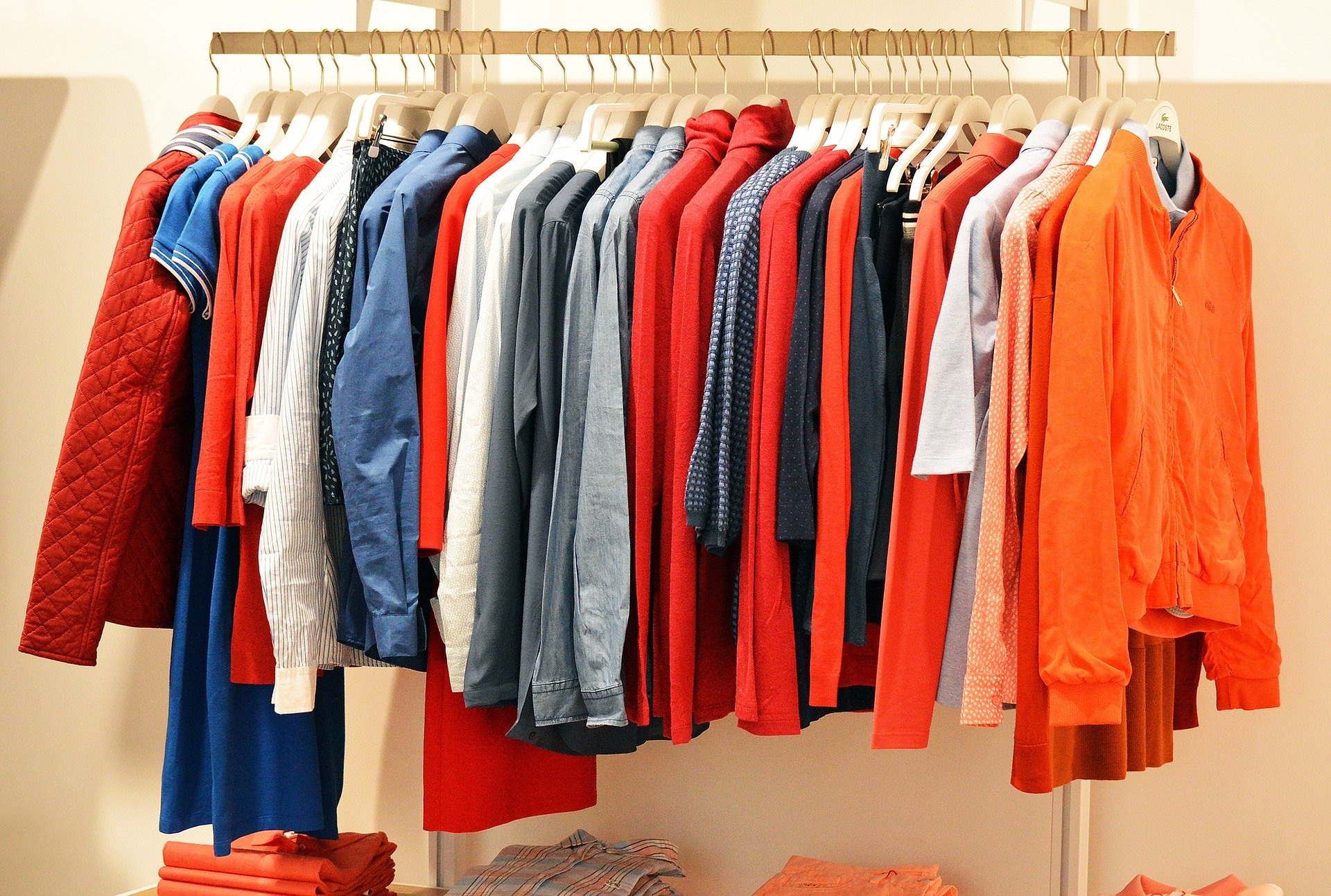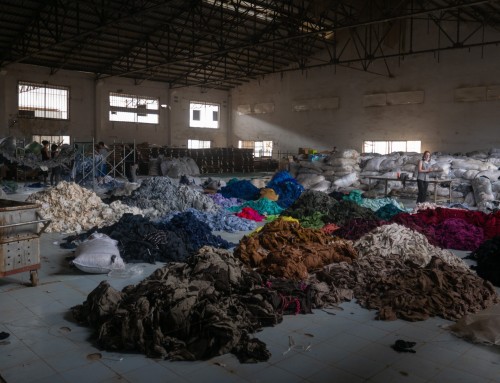The fashion industry has had a turbulent few years, partly due to COVID and the associated global supply chain disruption across 2020/ 21. The industry has responded to pent-up consumer demand following the pandemic, driving growth across brands in 2022 and the start of 2023. However, this raises further questions about the industry’s success in driving sustainability.
Sustainable fashion has been a growing trend across supply chains and fashion brands for several years now, especially as an increasing number of consumers demand greater transparency and ethical practices from fashion brands. In addition, environmental legislation from various governments and lobbying pressure from environmental groups are also putting pressure on the industry.
As we all know, the fashion industry causes significant environmental damage. In addition to this, there are also ethical sustainability concerns regarding fair labour practices. There’s a long way to go before the industry can be considered truly sustainable, but there are several significant areas of positive progress. In this article, we’ll look at ways sustainable fashion is improving currently and beyond.
- Increased Transparency Across Supply Chains
Increased transparency is one of the most significant changes we’ve seen in the fashion industry in recent years. Consumers are demanding more information about where their clothes are made, who made them, and what impact they have on the environment. As a result, brands are starting to respond to this demand by sharing more information about their supply chains and production practices.
As the global fashion industry uses complex supply chains, transparency is critical to objectively assessing sustainability. Transparency allows brands and manufacturers to identify and address issues such as poor working conditions for garment workers, environmental damage and untraceable natural resource use. In addition, compliance and sustainability commitments are much easier to track in a transparent supply chain.
Transparency also allows for optimisation and consolidation, increasing efficiency and timely reactions. Manufacturers can use data and AI technology to respond quickly to market trends and direct resources efficiently, reducing waste and costs. Brands can use transparency as a marketing tool, but holding them accountable for their sustainability commitments is also critical.
Consumers also need increased transparency in supply chains. This transparency will help consumers make better, more sustainable choices, reducing the demand for high-volume, high-eco-impact, low-cost fashion.
While transparency still needs to be universal across the fashion industry, this area has made progress. Some brands, such as Patagonia and Everlane, have made transparency a core part of their brand identity and set an example for other companies.
Technology for transparency
To achieve increased transparency, robust and innovative technology is vital. Lack of clarity in a confusing supply chain is a significant obstacle; technology can help overcome this. For example, many brands now use sustainability reports to share information about their sustainability initiatives, including using sustainable materials, waste reduction efforts, and promoting fair labour practices. In addition, several third-party organisations certify brands based on their sustainability practices, such as the Global Organic Textile Standard (GOTS) and the Fair Wear Foundation.
Technology platforms and apps will give consumers, suppliers and other stakeholders the ability to track areas such as:
- Environmental and social impact
- Corporate responsibility
- Logistics
- Documents and certificates
- Provenance of materials
Digital passports like the EU Digital Product Passport (DPP) are helping consumers understand and track their garment purchases. This will make buying sustainable options easier and allow consumers to force brands to take responsibility for measuring genuine impact.
Takeaway 1:
Brands and manufacturers are becoming increasingly aware of transparency, investing in technological solutions to encourage clarity across supply chains and support more sustainable consumer choices. As a result, technology innovation is driving huge positive progress in this area.
- Greater Adoption of Sustainable Materials
A second area of positive progress in sustainable fashion is the increased adoption of sustainable materials. Fashion brands increasingly use more sustainable materials, including organic cotton, recycled polyester and TENCEL™ lyocell. These materials can be more environmentally friendly than traditional materials, reducing the fashion industry’s negative environmental impact.
Massive fashion brands such as Levi’s and Patagonia are embracing this area. Levi’s has launched a range of jeans made from recycled cotton and polyester, reducing water and energy consumption. Reformation and Everlane have created clothing lines using organic cotton, bamboo and hemp. UK fast fashion chain Boohoo has committed to its Recycled Collection, working with a UK-based supplier to develop items from 95% recycled polyester and 5% elastane from previously landfill-bound plastic.
Next-gen and bio-based materials
Next-gen and bio-based materials are also crucial. These innovative fabrics are sourced from various sources, including mushrooms for mushroom leather, coffee grounds and even pineapples. These leverage technology, including fermentation and tissue engineering, and are used in different garments, shoes and accessories. These next-gen or bio fabrics are sustainable and biodegradable and represent a critical next step towards a more sustainable fashion industry.
Many leading fashion brands actively pursue next-gen materials through their own internal development programme or partnerships. This achieves the elusive magical jackpot, creating genuinely sustainable fashion that consumers also want to buy. However, while this increase in usage is positive, there are also challenges in using more recycled or eco-friendly materials. This includes the scale and investment required.
Takeaway 2:
It’s worth noting that using more sustainable materials is still limited, with many brands still relying on unsustainable materials such as conventional cotton and synthetic fabrics. There are also concerns regarding the greenwashing marketing power of claiming a garment is made from more sustainable materials. However, this increased usage of recycled fabrics and more significant investment into next-gen fabrics is to be encouraged.
- Circular Fashion Initiatives
Currently, most global fashion industry operates on a linear business model. This means the company starts by creating a design, producing the product, and selling it to customers through various channels such as retail stores or e-commerce websites.
In this linear model, the focus is on the efficiency of the production process, and the goal is to produce products at the lowest cost possible while still meeting the company’s quality standards. In addition, the company typically controls every step of the process, from design to distribution, and operates on a “push” model, where products are pushed onto the market in the hope that customers will buy them.
As reported by the Ellen MacArthur Foundation, between 2000-2015, clothing production doubled, yet the time consumers spent wearing these items dropped by a third. As a result, fast fashion has fundamentally transformed the industry with accompanying environmental damage. Often, once the garment is discarded, it’s not reused helpfully – it ends up in a landfill or even burned.
This model has been prevalent in the fast fashion industry for many years. But, as sustainability becomes more of a concern, the linear model has come under scrutiny. As a result, customers demand more ethical practices from fast fashion brands, driving companies to adopt a more circular business approach.
With a more circular approach, companies are rethinking the idea of fashion, designing products with the entire lifecycle in mind. This includes making clothes from recycled materials, ensuring they can be recycled effectively and making clothing rental, retail, and reuse more accessible and available.
These initiatives aim to reduce waste and promote a more sustainable fashion industry by creating a closed-loop system for clothing, where the garments produced have a longer life cycle. This includes initiatives such as clothing rental services, clothing swaps, and take-back programs.
Many brands are also starting to design their products with circularity in mind, using materials that are easier to recycle and designing clothes that can be easily disassembled and reused. This approach to fashion design represents a significant shift away from the traditional linear model of “take, make, dispose” and towards a more sustainable and circular model.
Consumer behaviour is also becoming more circular.
Second-hand reseller platforms and apps such as Depop, eBay and Vinted also play a key role in creating a more circular economy, both in dealing with the oversupply of clothes in the system and making recycling clothes, sustainability and buying second-hand much more normalised for consumers. The recent data support this – a recent survey from Unidays with 27 million student members revealed 75% of Gen Zs are shopping second-hand, and almost 40% are reselling their clothes across various apps and platforms. Once, second-hand shopping was deemed the poorer choice, but it’s now become a fundamental way for people to show their individuality, reduce costs and be more sustainable.
On a mass level, consumer behaviour has shifted dramatically from linear practices towards circular behaviour. If this continues, circularity will become more normalised, and consumption of new fast fashion is also likely to fall.
This is important. While circular fashion initiatives have gained traction in recent years, they still need to be more widespread. Change in consumer behaviour is absolutely vital in creating a more sustainable global fashion supply chain, with circularity as the focus; and the norm.
Takeaway 3:
Circularity business models, instead of linear fashion models, are expected to continue to grow. This is due to many factors, including affordability, convenience, sustainability awareness, environmental concerns and increased rental and resale sectors. This growth opportunity is essential, making it more likely for profit-based businesses to embrace new circular models.
However, this must be approached with caution. The environmental benefits of a circular model are not automatic, especially if they’re seen as an ‘add-on’ to traditional, more wasteful practices without central business models changing.
Conclusion
The fashion industry has faced many challenges in recent years, including environmental damage and ethical concerns. These challenges remain, but there is also an increased drive to find solutions from brands, manufacturers and consumers.
There has been real progress in delivering genuinely sustainable fashion; including increased transparency across supply chains, the use of sustainable materials in garments, and circular fashion initiatives at the heart of business models. Transparency allows for the optimisation of resources, while the use of sustainable materials reduces the industry’s negative environmental impact. Circular fashion initiatives encourage businesses to create a closed-loop system throughout their operations, where clothing is reused or repurposed to minimise waste. Acknowledging this progress is important, but there is still much to be done to achieve a sustainable fashion industry. Increased collaboration, commitment from all parties and investment to scale sustainability solutions is vital.
Textile Consult operates worldwide, consulting on a variety of management, training and sustainability issues within the textile industry. Contact us today to find out how we’ll work with you to find effective, sustainable solutions for your company.


